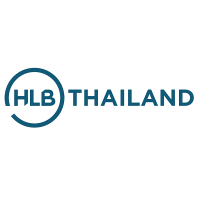
The following article was first published in International Tax Review. For all articles authored by HLB Thailand for the International Tax Review, please click here.
Thailand has taken significant steps in recent years to improve its transfer pricing (TP) rules, to fulfill its commitments as a member of the OECD’s Inclusive Framework on BEPS.
TP legislation has been in effect since 2019, introducing mandatory TP documentation requirements and filing of TP disclosure forms by certain taxpayers.
Thailand’s Revenue Department has since issued rules on the adjustment of revenue and expenses on account of related party transactions.
In this article we discuss the introduction of the concept of ‘secondary adjustment’ in Thai TP regulations.
Secondary adjustments: understanding the concept
When related parties have not adopted an arm’s length price in their dealings, the TP legislation requires an adjustment to be made to the taxable net profit of the parties.
An adjustment needs to be made in the taxable income of the taxpayer to align the transfer price (the price at which related entities transact with each other under a controlled scenario), with the arm’s length price (the price at which two independent entities transact amongst each other in an uncontrolled situation). This is known as the primary adjustment.
Merely making a primary adjustment does not address the additional benefit which accumulates from the non-arm’s length pricing of the transaction (one of the related entities has effectively received excess funds from the transaction). To address this, the concept of secondary adjustments came into existence.
The OECD in its Transfer Pricing Guidelines for Multinational Enterprises and Tax Administrations, defines secondary adjustments as:
“An attempt to account for the difference between the re-determined taxable profits and the originally booked profits. The subjecting to tax of a secondary transaction gives rise to a secondary transfer pricing adjustment (a Secondary Adjustment). Thus, Secondary Adjustments may serve to prevent tax avoidance.”
The modes of secondary adjustment that globally prevail are:
- Constructive loan: The excess amount retained by a related entity is deemed an interest-bearing loan made by the taxpayer;
- Constructive equity contribution: The excess amount retained by a related entity is deemed an equity contribution made by the taxpayer; and
- Constructive dividend: Theexcess amount retained by the related entity is deemed a dividend subject to withholding tax, if any.
The constructive equity contribution mode of secondary adjustment is generally considered the least preferred, as it does not attract taxation in the first place. On the other hand, constructive dividend and constructive loan approaches are widely adopted by tax administrations, which may give rise to withholding tax on a deemed dividend and interest income on a deemed loan.
Secondary adjustments in Thailand
The Director-General of Thailand’s Revenue Department released an important notification on TP in 2021 known as “Notification of the Director-General of the Revenue Department on Income Tax (No.400)”. It laid down the rules, procedures, and conditions to be followed by tax assessment officers when inspecting the pricing of related party transactions and determining any adjustments to be made.
The notification empowers a tax officer to make an adjustment (i.e. primary adjustment) to a taxpayer’s income or expenses arising out of transactions with related entities if the same do not meet the arm’s length criteria.
As far as secondary adjustments are concerned, the notification says if a primary adjustment gives rise to income that is not actually received, or a reduction in expenses not actually paid, such amount shall be regarded as assessable income under Section 40 of the Thai Revenue Code. The Revenue Department shall have the power to adjust income and expenses as if the adjustment amount was received or paid, for the purpose of calculating taxable net profit. This is according to Section 65 of the Revenue Code, and for assessable income, Section 70 or Section 70 bis of the Revenue Code.
Section 70 taxes the payment of certain types of assessable income under Section 40, such as dividends and interest, paid to foreign companies that do not conduct business in Thailand. Section 70 bis taxes the remittance of branch profits out of Thailand, in case a foreign company carries on business through a branch in Thailand.
The notification is silent on the exact nature of the secondary adjustment, whether to be considered as a constructive loan or dividend for example. The Revenue Code does not contain provisions regarding secondary adjustments and there is no other official guidance issued on this subject, although the Revenue Department has been known to consider secondary adjustments in tax audits. It is understood that the characterisation of the adjustment shall be determined based on the given facts and circumstances of each case.
The wording of the secondary adjustment provisions in the draft of the notification varies from the final notification issued, and may provide an insight on the facts and circumstances that the Revenue Department will consider when characterising the adjustment.
The draft stated that when a primary adjustment is made and the counterparty of the related party transaction is a shareholder of the taxpayer, the amount of secondary adjustment (after deducting additional corporate tax) will be deemed as a dividend or deemed profit distribution. In the other cases, when the counterparty is not a shareholder, the secondary adjustment amount (after deducting additional corporate tax) will be deemed to be an inter-company loan. This approach was omitted from the final notification issued.
The Revenue Department’s approach to secondary adjustments will likely become clearer over time, as TP audits are conducted and taxpayers are challenged on the appropriateness of their policies.
If you would like to know more about Thailand’s transfer pricing rules and documentation requirements, please see our comprehensive guide to transfer pricing in Thailand here.



